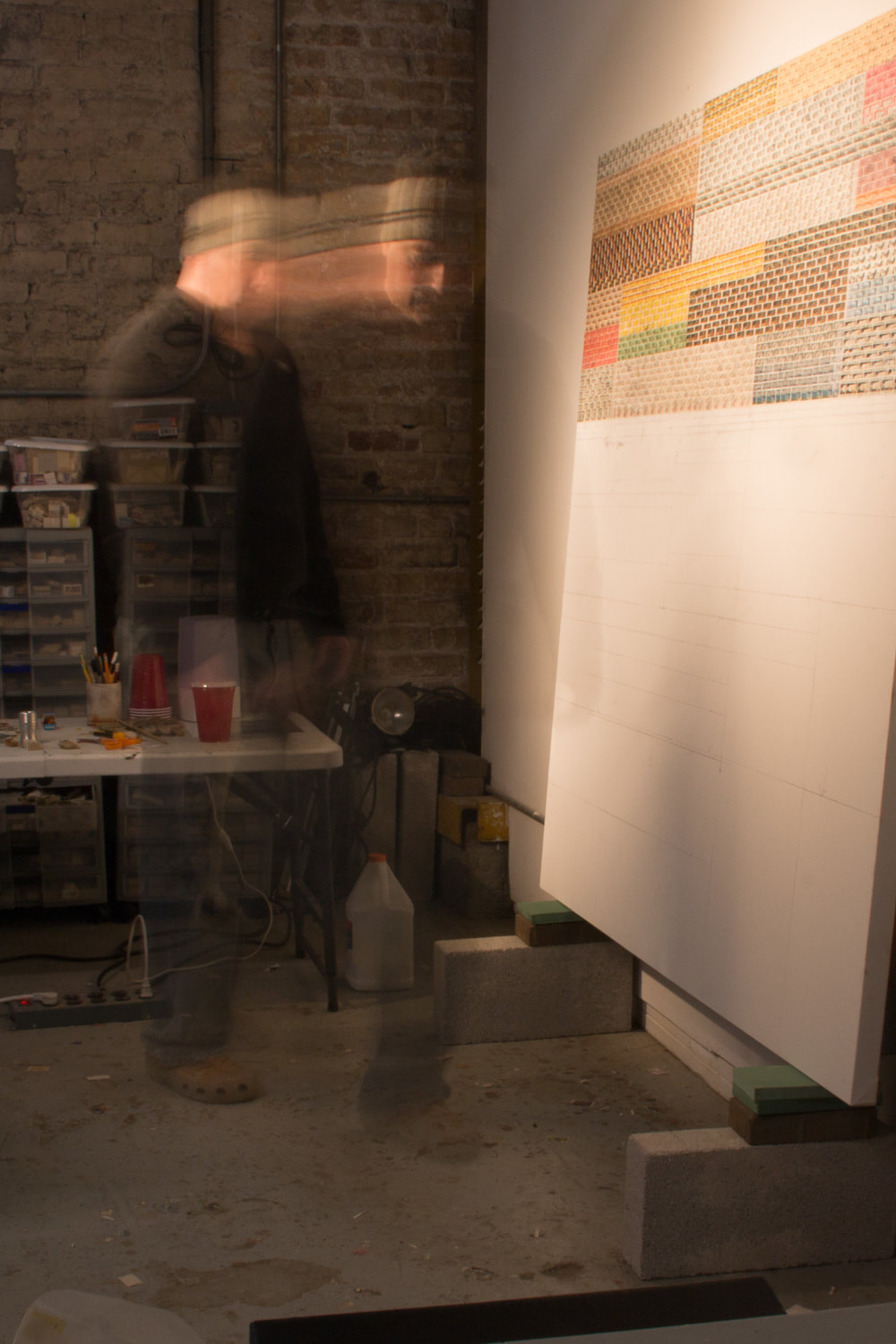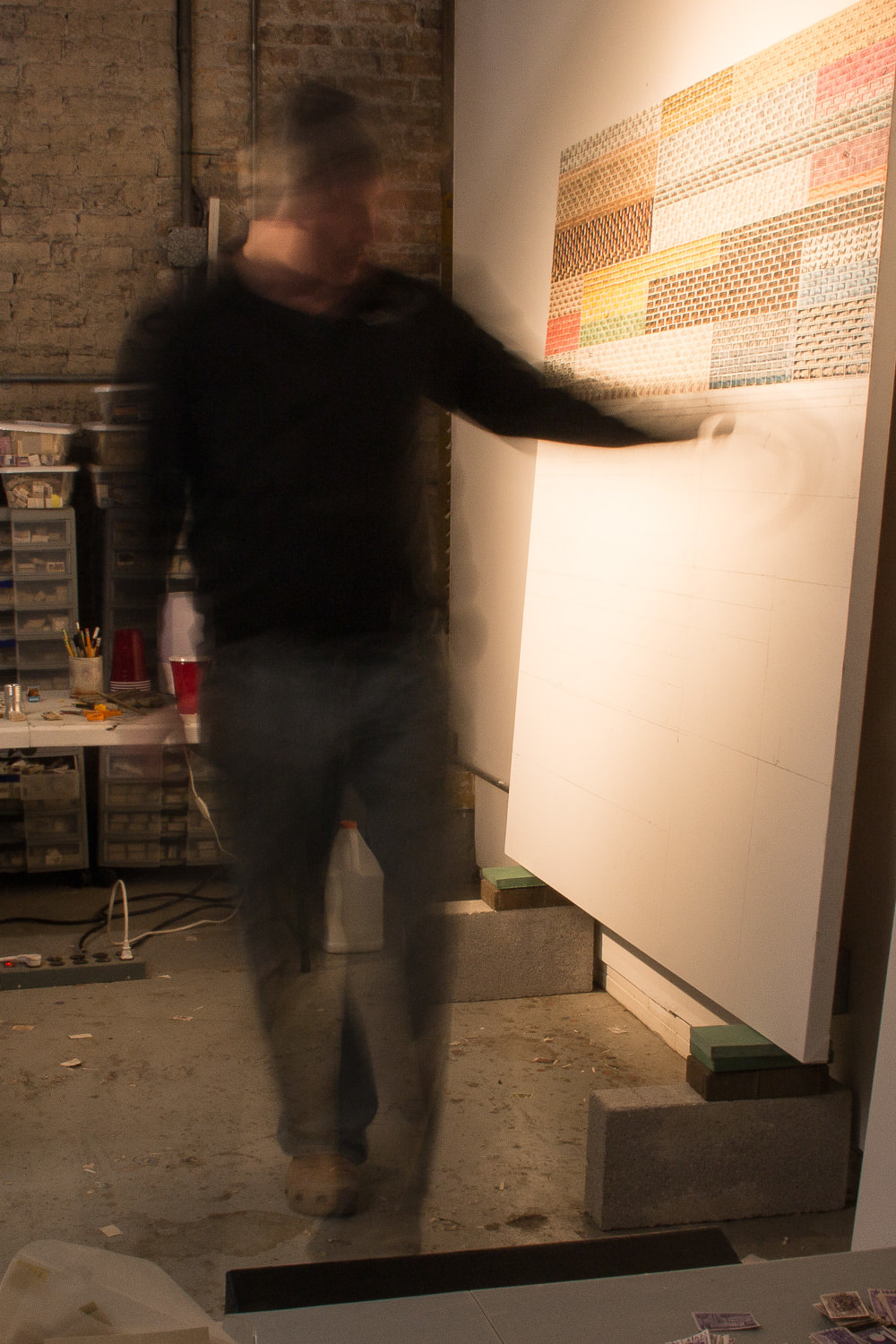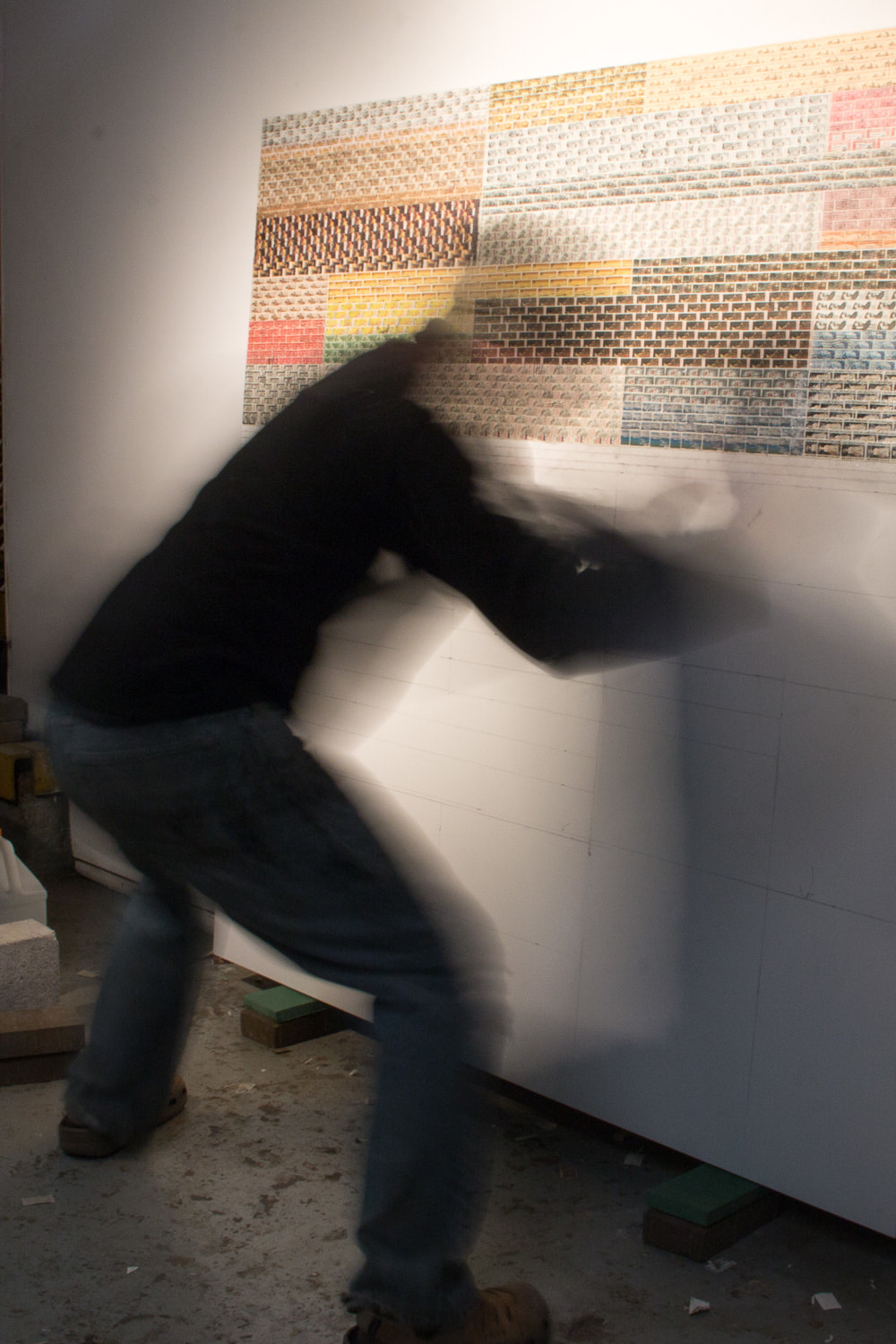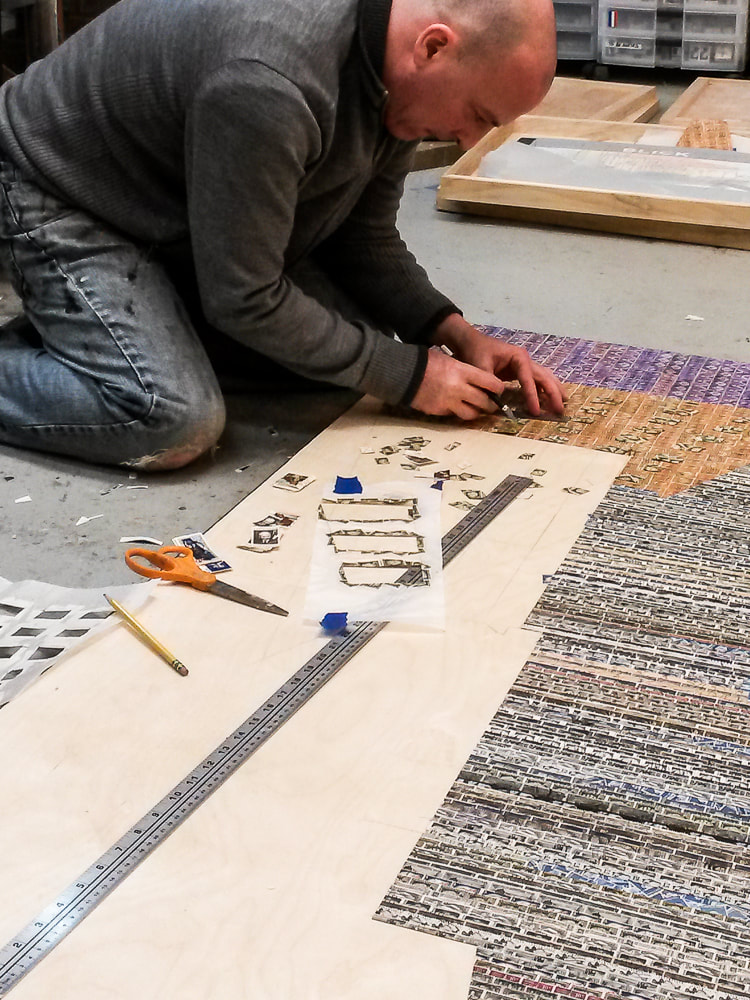|
In the studio: at work on "Meaningful Adjacencies," one of three pieces commissioned through Blue Gallery, Kansas City, MO for a local hospital renovation. A recent interview by ARTSPACE 8 gallery, Chicago. AS8-Where were you born and raised? Did you go to college? I was born in 1968 and raised in Skokie, Illinois. I went to Niles North High School in Skokie and graduated in 1986. I then went to Indiana University in Bloomington, Indiana, and earned a BA degree in 1990. Later, I completed the Certificate Program at the Chicago Photography Center. AS8-When did you start creating art? My father was a painter and sculpture and always had a home studio. I literally lived with art, and art supplies, since I was born and started drawing at a very early age. From drawing, I progressed to painting and collage. Both of my parents always showed great interest and support in my art. AS8-Have you had another relevant career that wasn’t in the art industry? Currently, I teach photography. In addition, for about 20 years, I owned and ran a very successful Traditional Karate School, or dojo, in the Wilmette, Illinois. I closed the dojo permanently several years ago to concentrate on my art and photography full time. AS8-Who is your most influential artist (and who do you admire)? My father was the most influential artist in my life because he exposed me to art, and the making of artworks, at a very young age and through most of my formative years. As far as more contemporary painters and mixed media artists, Frank Stella, Agnes Martin and Gerhard Richter, are all artist I admire for very many reasons. In the realm of photography, I am inspired by Ansel Adams, Edward Weston, Dorthea Lange and others of the California group of the 1930-40s. AS8-What compels you to create what you do? What are your artistic inspirations? When I was young, my mother took me to a press proofing for a printed product advertisement. Looking into the glass loop, I was amazed to see that the seemingly solid colors were actually tiny individual dots. Sometime later, while visiting the Art Institute of Chicago, I encountered Georges Seurat’s, A Sunday on LA Grande Jatte, and was introduced to the technique of pointillism. Most of my mixed media work is based on this idea of using many similar objects to create an interconnected whole greater than the sum of its parts. AS8-When did you know you wanted art to be your career? How did you get started in the art field? When did you start getting exhibited and where? I never consciously decided to make art my career or life’s work. My father was my first inspiration. He was a sculptor and a painter. From the age of four or five, I remember working on sketches with him, particularly of faces and my own left hand, and spending lots of time in his studio, which was always in our home. My interest grew from there. I had my first one person show in Chicago in 2000-2001 at a very established River North gallery. The show did very well as far as sales and the critical response. That experience essentially launched my career and gave me the confidence and motivation to take it to the next level. AS8-Who buys your art if you know? It is really quite a range, with no demographic or type of sale coming out ahead. However, I consistently do well with corporate sales and commissions. For example, in the last year or so, I have had my work placed in two hospitals, five corporate headquarters and several banks. AS8-hat differentiates you from the rest of people who do what you do? Why should people care about your artwork? My unusual mediums (currently thousands of used postage stamps) and the universal ideas behind what I do are my differentiators. I often use, or reuse, materials outside their normal context and that can be acquired in large quantities. This allows me freedom from overthinking the materials or the process, which is one at a time construction with great repetition. Currently, I am using cancelled postage stamps as my primary medium. When you view a piece you must ask: Where did they originate? Who sent them? What letters did they carry? Each used and canceled postage stamp has a hidden history of its own. Each small stamp represents this unknown story and the expanded web that it was once connected to. My artwork touches on both the individual and the collective, on both the original sender of each correspondence and the society as a whole. AS8-What are you currently working on? I am currently working on an ongoing series of geometric abstractions using thousands of used postage stamps and resin as my medium. I have been working on this series for about ten years now. I am influenced by Carl Jung’s theory of the collective unconscious and the interconnectedness of the universe and its correspondence to several schools of eastern thought and mysticism. The postage stamp pattern fields are my interpretation and reinvention of mandalas, or meditative microcosms. AS8-How does your mood affect your work? Usually, my creative process is simple: I get myself to the studio regardless of how I’m feeling or any lack of motivation. I get right to work. I don’t wait for the right mood or inspiration. Inspiration comes from the work itself and inspiration (the muses) only respects a strong work ethic and perseverance. Inspiration shows up for those who cut through the resistance and just do it. There is no other way if you are serious about your work and career. Having made that strong statement on self-discipline, sometimes specific studio work is just not possible that day, for a variety of reasons. Fortunately, I usually split the week up in terms of 70/30. The 70% is the actual making of the work and the 30% is the PR, communicating with galleries, updating website and social media, documenting new work, etc. I call it the “back office” work. So on the days were one type of work is not possible; I shift gears and take care of the other, equally important part. In the studio: at work on an architecturally based corporate commission for a Chicago real estate firm, Spring 2016
Comments are closed.
|
Archives
July 2024
|
jordandscoTT[@]sbcglobal.net | 773-206-2824 | Chicago IL USA





